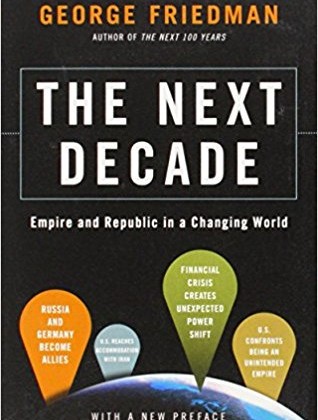by | Nik Ahmad Faizul Abd Mallek
The pledge by the Prime Minister, Dato’ Sri Mohd Najib Tun Razak at the United Nations Climate Change Conference 2009 in Copenhagen: ‘It is my dream that one day we can live in a clean, healthy and high quality environment where cities, townships and communities are built on the fundamentals of Green Technology’ and ‘… Malaysia is adopting an indicator of voluntary reduction of up to 40 percent in terms of emissions intensity of GDP by the year 2020 compared to 2005 levels. This indicator is conditional on receiving the transfer of Technology and Finance of adequate and correspond to what is required in order to achieve this indicator’; become the launching pad for Malaysia to establish smart communities initiative.
A strategic paper on Smart Communities was presented at the inaugural meeting of the Global Science and Innovation Advisory Council (GSIAC) on 17th May 2010, chaired by the Hon. Prime Minister of Malaysia. As an effort to elevate the importance of science and technology in national planning and to sustain growth beyond 2020, the Science to Action (S2A) initiative was subsequently launched by the Prime Minister on 1st November 2013. One of the S2A flagship programmes identified is the Smart Communities Programme focusing on the Smart City. In line with the S2A’s objective to be action oriented with grounded impact, this programme would be industry driven in nature to drive growth, especially in the new emerging industries through the application of science and technology, leading to new implementation and business models.
Why Smart City?
As cities grow, it face a number of challenges namely increase in population, energy consumption, and green house gas emission. Preparing communities against these grand challenges, is now a necessity through the following initial efforts :
• The pledge by Malaysia on adopting an indicator of voluntary reduction of up to 40 percent in terms of emissions intensity of GDP,
• Forecasted Future Investment in Smart City;
• World Bank’s Malaysia Economic Monitor 2011;and
• Malaysia’s Green Technology Foresight 2030.
Global Trend on Urbanisation:
The United Nations report on Urban and Rural Growth for Developed and Developing Countries: 1950-2050 indicates that currently more than 50% of world population live in urban areas and would increase to almost 90% in the next 20 years as world population is expected to grow from 6.9 billion to 8.9 billion people, of which, 8 billion will be living in urban areas.
Cities are also responsible for 60 % – 80% of the world’s energy consumption and greenhouse gas emissions. Cities have therefore; become the focal point of engagement with issues of addressing socioeconomic needs and sustainability.
World Bank Economic Monitor 2011 on Malaysia focusing on Smart Cities:
The World Bank Economic Monitor summarises that the requirements to transform Malaysian cities are closely linked to broader structural reforms outlined in the New Economic Model (NEM). Key extracts of the report are:
a. Cities are central to Malaysia’s aspiration to become a high-income economy: Higher levels of urbanization are associated with higher productivity and overall economic growth. This is because cities create proximity and facilitate the flow of knowledge that drives innovation. Therefore, in order for Malaysia to achieve its goal to become a high income economy by 2020 it needs to make its cities smart;
b. The need for reorientation of the development corridors to focus on narrower clusters: Under the Tenth Plan, the role of corridors has been refined to focus on clusters linked to NKEAs. While this is a welcome shift, there must be concerted efforts to maximize the corridors’ effectiveness;
c. There are ample opportunities for Malaysia’s leading universities to unleash its potential and intensify collaboration with the cities that host them;
d. Competition requires a degree of autonomy to local-level decision makers. This is in fact fully equivalent to implementing the New Economic Model (NEAC, 2010), which advocates “Localised autonomy in decisionmaking (by) empowering state and local authorities to develop and support growth initiatives, and encourage competition between localities”
Forecasted Future Investments:
Globally, the expenditure on technologies to support the Smart City is estimated at USD 100 billion in the next 10 years. The annual expenditure on core technologies is estimated to be at USD 16 billion perannum by 2020.
Malaysia, as a developing nation needs to ensure that the necessary strategies are deployed into cities through private and public partnership involving the following issues :
1. Assist in optimising government investment and maximising outcomes;
2. Accelerate and intensify industry creation on green technology and sustainable development through inter-ministerial, inter-agency and interindustry association coordination;
3. Induce multi-stakeholders partnership platform to cater for the multiple interests and content;
4. Integrate and optimise funding allocation involving both Operational (OE) and Developmental (DE) Expenditures, to bring the best outcomes through co-sharing of funding, resources and facilities; and
5. Provide new market space for investors (FDIs and DDIs) in the emerging industries with longer term outlook to induce industry participation and investment in green technologies/ capabilities to implement sustainable green projects in Malaysia and beyond.
Green Technology Foresight 2030:
The National Green Technology Foresight 2030 study which was jointly undertaken by the Ministry of Energy, Green Technology and Water (KeTTHA) and MIGHT. There are nine key pre-identified sectors, of which, seven are directly related to cities namely, Energy, Water, Waste, Transportation, Manufacturing, Buildings and ICT. The priority area identified for each of these sectors shall be the guiding element for future industry investments
What is Smart City?
There have been many interpretations and definitions on Smart City depending on multiple perspectives, one of which is ‘technological fusion in a strategic way to bring sustainability, citizen well-being and economic development’. There are several national policies and initiatives related to Smart City involving climate change, green technology and ICT.
The diagram on Smart City components as described in Figure 4 is an initial effort to consolidate and synergise these policies under this programme.
Integration across city systems is important to make cities smarter through 3 key components :
• City functions to ensure more effective city operations through green technology applications
• City community needs through providing value experiences in e-services
• City performance monitoring and reporting
A successful Smart City development implements and strengthens policy coordination to provide strategic direction and demand creation industry driven with government facilitation; enabling programmes in providing conducive market and implementation environment to facilitate project delivery as well as high impact projects and supply chain readiness to deliver grounded outcomes.
Underlying the Smart City components is the strategic content to support the implementation of Smart City which consists the following :
• Policy coordination to provide strategic direction and demand creation (Government driven with industry input).
• Enabling programs are the key success factors in providing conducive market and implementation environment to facilitate project delivery (Government and Industry partnership).
• Implementation of high impact projects and supply chain readiness to deliver grounded outcomes through introduction of new business model and value chain (Industry driven).
The interplay and coordination in between these areas are crucial to ensure smooth implementation of the Smart City programme to meet its high level objectives
11th Malaysia Plan
In the 11th Malaysia Plan, a 5 year macroeconomic planning of the Malaysian Government (2016-2020), city development surface prominently. As part of the effort to re-energize economic growth, in the thematic areas of ‘Cities as Growth Poles’, ‘Urban Transformation’ and ‘Green Growth’ have been identified as part of the strategic initiative new growth areas. Investing in Smart City Programme in the 11th Malaysia Plan will provide the following strategic benefits as follow :
i. To add value to the current planning of the 11MP through the early incorporation of strategic Smart City Programme (as cross cut element) to synergise some of current elements of 11MP in order to optimise government investment and maximise outcomes;
ii. To accelerate and intensify industry creation on green technology and sustainable development through interministrial, inter-agency and interindustry association coordination;
iii. To induce multi-stakeholders partnership platform to cater for the multiple interests and content;
iv. To integrate and optimise funding allocation for 11MP involving both Operational (OE) and Developmental (DE) Expenditures, to bring the best outcomes through co-sharing of funding, resources and facilities;
v. To provide new market space for investors (FDIs and DDIs) in the emerging industries with longer term outlook to induce industry participation and investment in green technologies/ capabilities to implement sustainable green projects in Malaysia and beyond.
Implementation & Business Models
Bridging the market, technology and funding is key to the success of in any industry driven Smart City projects. Hence, implementation model through Private- Public Partnership (PPP) is key to the success towards creation of industry driven projects as depicted in Figure 6.
In sustaining the growth momentum for these PPP projects for Smart Communities program, there need to be a sustainable Business Model that induces partnership between the Supply and Demand providers. In this manner and with sustainable market, it will propel branding, capacity building development as well as industry driven R&D.
Such Implementation and Business Model would elevate industry in strategic areas of Green and ICT, to potentially become national and global champions.
Conclusion
Putting all the puzzle pieces together, smart city is ideal platform towards synergising and aligning multiple nation-building efforts leading to sustainable growth.
In accelerating the Industry Driven Smart City projects, it is also crucial to adopt the right implementation and business models which are conducive for the industry to invest through PPPs that involve new value chain development, as well as value add to the locality in terms of businesses to SME/ SMIs, job opportunities, etc.
It is also fundamental that the governance on projects implementation supports the interest of the industry in terms of timely decision making and facilitative in nature. Governmental platform in on the green agenda is a necessity at state level, in strengthening green governance, supported by industry led Task Force in strategic areas.
The key challenge in most countries now (including developing nations) is addressing the enablers for Smart City, in facilitating industry investments into these new emerging areas. It is expected that the market will picks up in 2016 onwards. Hence, the global rat race in Smart City has started since 2010 and the country that manages to accelerate and organise itself in addressing these Enablers will be the front runners to reap the initial global market leadership.










